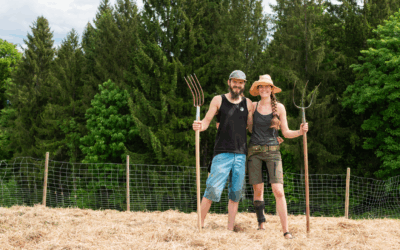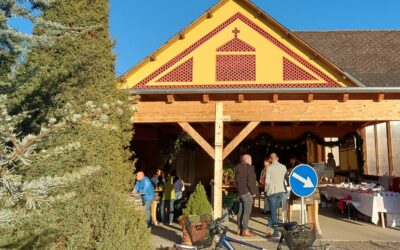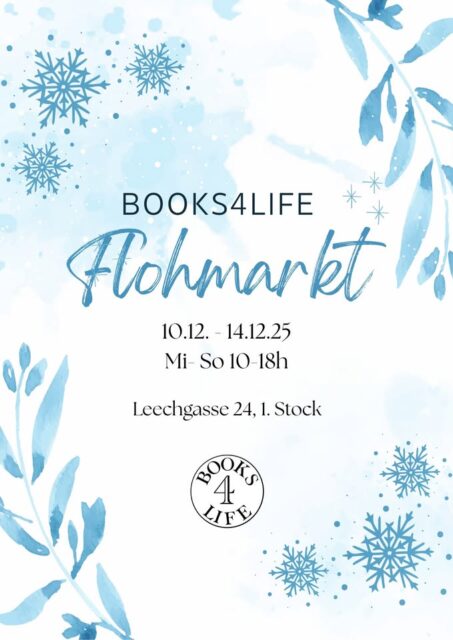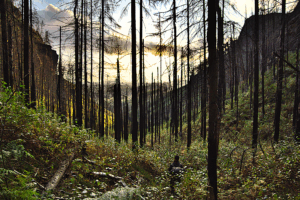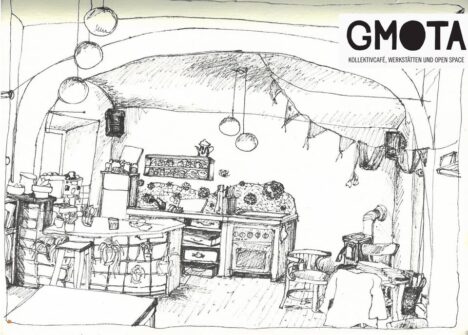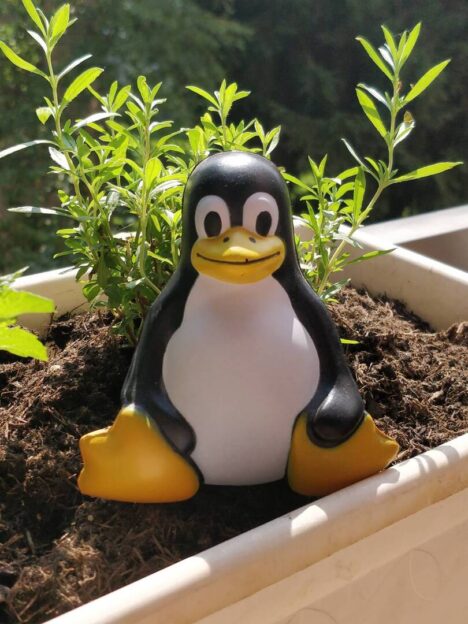Original post by barb on October 20, 2022. Translated by Lisa Scheer in 2023/24.
Disclaimer: Some of the links in this post might redirect you to a site in German. Feel free to use Machine Translation (such as DeepL or Google Translate) to get the information provided on these sites.
How can we design graveyards sustainably so that they stay natural oases for biodiversity?
Especially during All Saints, we take care of our loved ones‘ graves to stay connected to them. We buy flowers, flower arrangements and candles and decorate graves. Most resting places are in the middle of urban areas and serve as a part of the city’s green areas. They are shielded from traffic and noise and are a valuable habitat for animals and plants. They also cool our cities with their green. We need to make our graveyards more sustainable and should not think about or loved one’s alone when taking care of their grave but also about those coming after us.
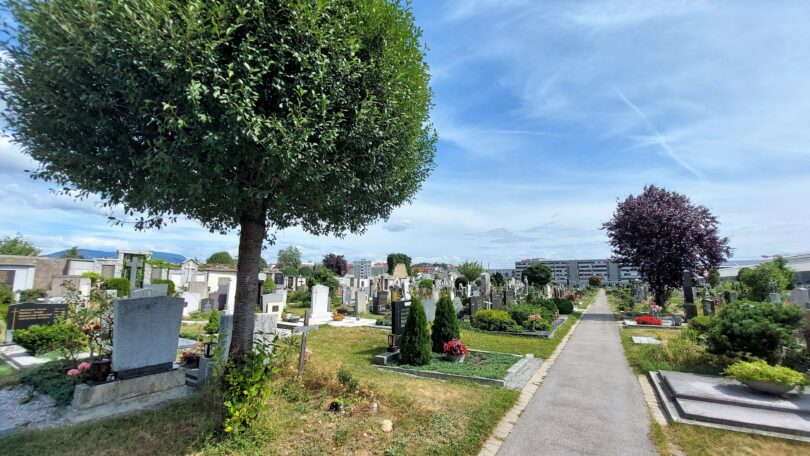
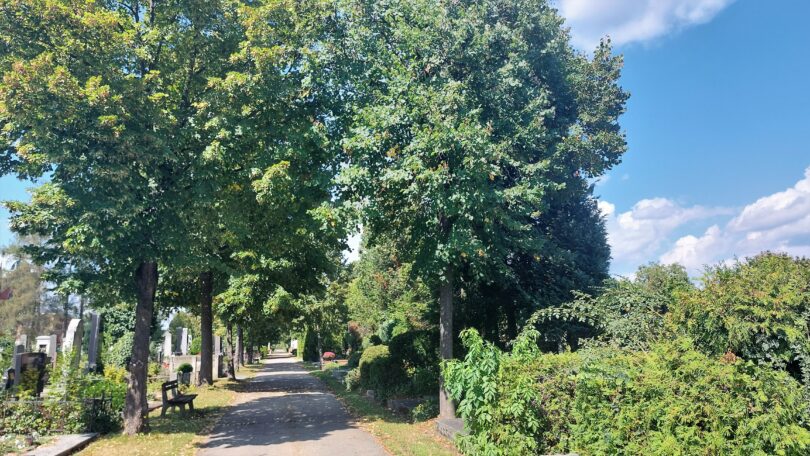
Some tips for sustainably designing our graveyards:
Flower arrangements
- buy regional flowers
- make arrangements yourself
- Some flower arrangements are painted so that they last longer – please buy unpainted flower arrangements.
- Prefer durable flower arrangements that don’t have to be thrown out after a few days.
- Residual waste: remove parts that do not rot (such as plug-in sponges, plastic decorations, wires, bows,…) and add them to residual waste
- Organic waste: throw decomposing parts into green waste
- Doing without wreaths at funerals and donating to charities instead helps save a lot of waste
Wild bee friendly & beautiful planting:
Can we do good for wild bees and more through grave maintenance? Plants on the grave that are close to nature help to reduce the need for watering and maintenance of the grave. Moreover, they provide a habitat for threatened species in the middle of the city. Insects, for example, love native species such as the tufted bellflower, comfrey or the milk star. Traditionally used ornamental plants in cemeteries, such as pansies, roses, carnations, chrysanthemums, etc., on the other hand, no longer provide food in the form of pollen and nectar for many varieties, as bees cannot reach the nectar in cultivated, double flowers. That’s why it is important to buy species that are bee friendly. It’s best to look for „bee friendly“ plants or directly asking for them in the garden centre.
Put bigger plants in the background, smaller plants in the foreground. Also think about the placement of the grave (shady, sunny…) when planting.
Fitting plants for a grave:
Herbs:
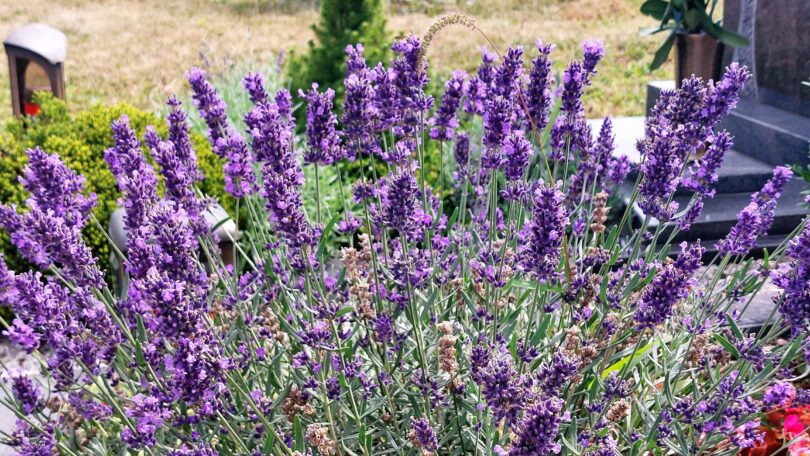
Common Dost (origanum vulgare)
- Height: 20-70 cm
- Life span: perennial
- Flowering: July to September
- Care: pruning in autumn
Lavender, rosemary, sage, thyme or myrtle also smell good, need little water and care, are a dream for bees, bumblebees and more, and can last for many years. That’s why herbs are ideal to sustainably design graveyards.
Flowers:
Mountain Aster (aster amellus)
- Height: 50-80 cm
- Life span: perennial
- Flowering: July to September
- Care: Pruning in autumn or spring
Begonias and belagonias, for example, are typical cemetery flowers that bloom all summer. When buying them, make sure to buy bee-friendly and regional varients. In general, everything that blooms a lot needs a lot of water. Perennial flowers should be preferred over annual ones, because otherwise multiple flowers are planted per year and then are exchanged and thrown out.
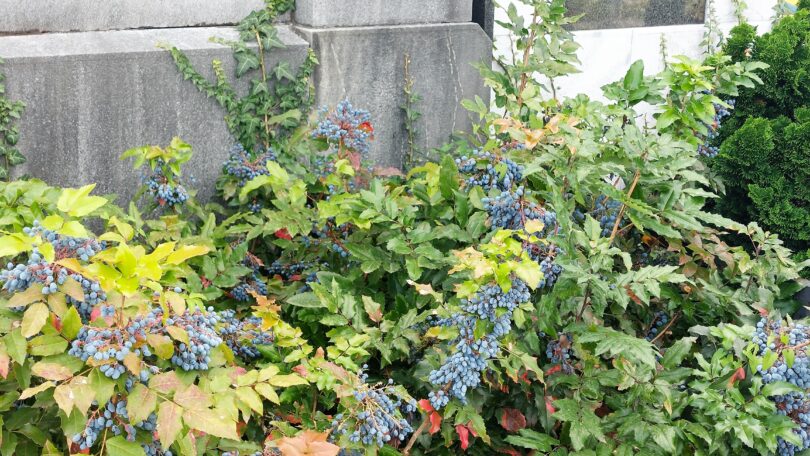
Perennials and shrubs:
A lot of people say that they don’t have time to maintain a grave. Therefore, shrubs, woody plants and low-maintenance ground covers are suitable. They often carry blossoms, colourful fruit and also have beautiful foliage in autumn.
So that there is green and blossoms around a grave all year, we recommend a mix of perennial plants such as roses, ground covers and a small amount of alternate planting.
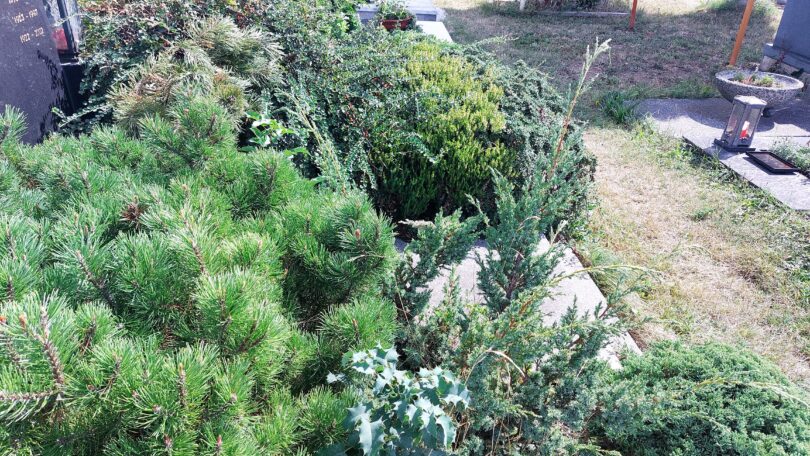
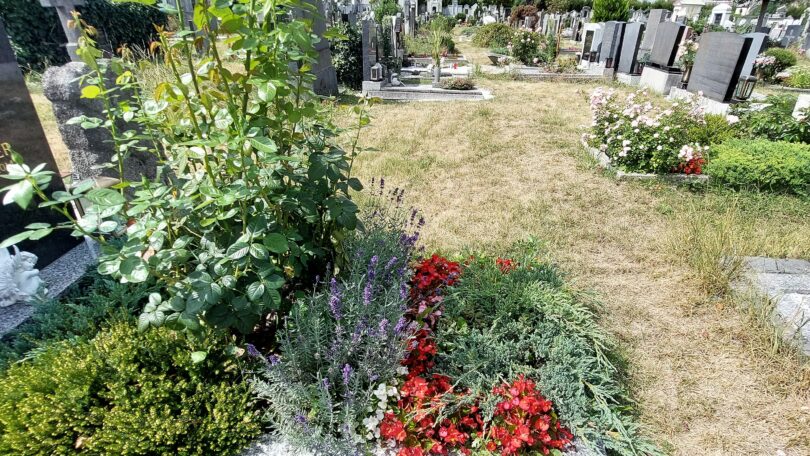
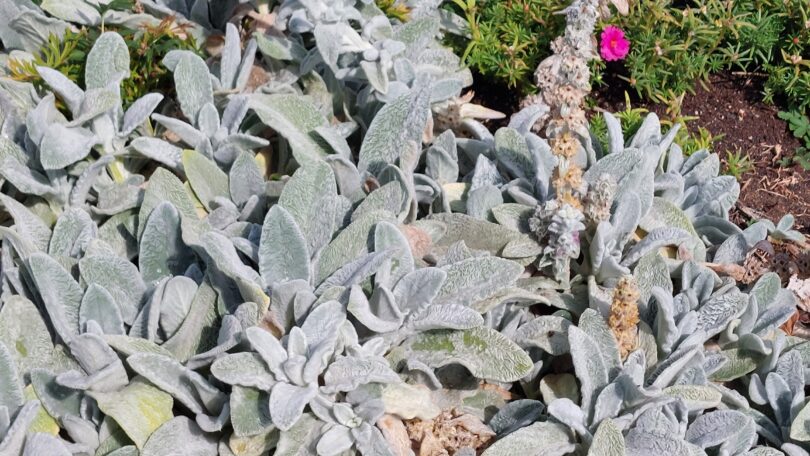
Non-flowering plants do not provide food for insects, but they offer good hiding places for hedgehogs, rabbits and other animals.
You can also commission graveyard gardening to design your grave decoratively and insect friendly. They will also take care of it. This costs money but saves you time.
More about graveyard plants in our post: „Zu Allerheiligen an Wildbienen denken„
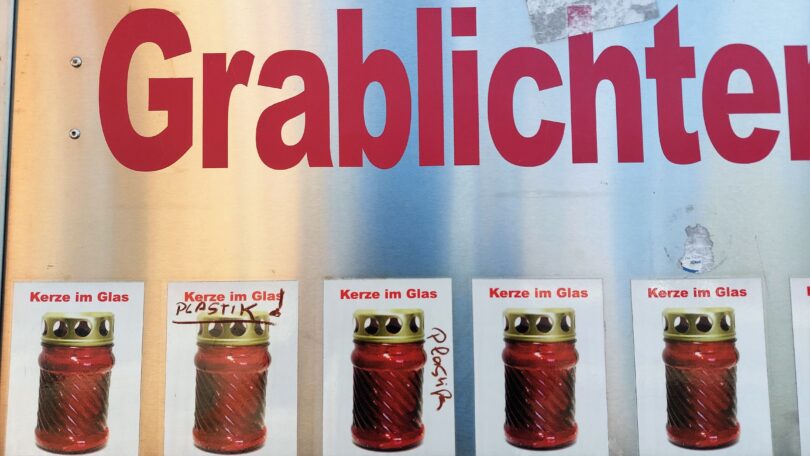
Candles:
When it comes to candles there are refill candles made of glass. The biggest part of candles has plastic and is made from paraffin, a petroleum product. That’s why it pays off to collect leftovers from candles and make candles yourself. Collect and separate batteries from electric grave lights and recycle them accordingly. They don’t belong in residual waste.
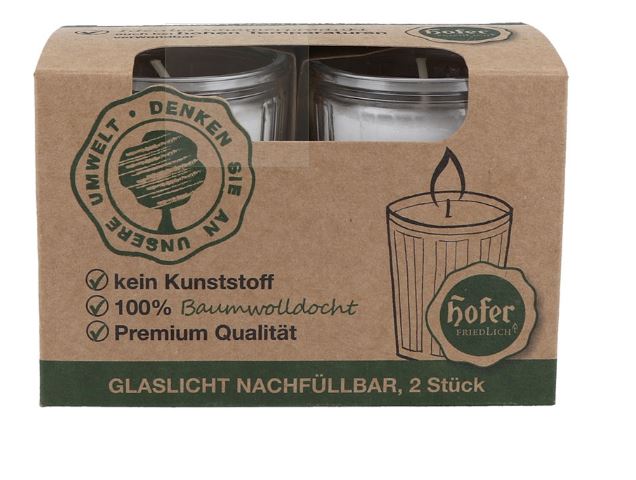
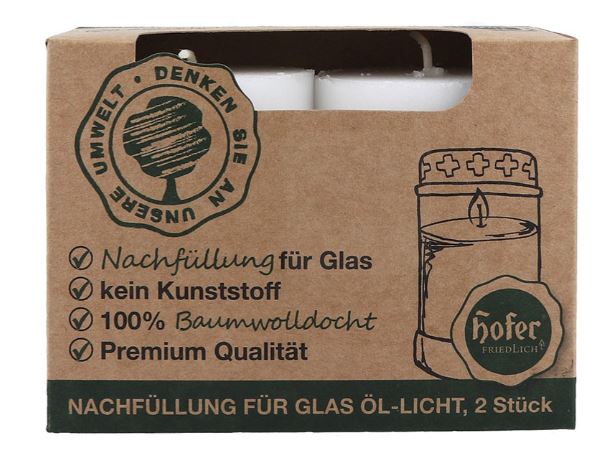
Disused LED grave lights must also be handed in separately due to their risk of catching fire and must not be disposed of in the residual waste. Drop-off points in Graz include the resource park in Sturzgasse, the fire stations at Lendplatz and Dietrichsteinplatz, and the mobile Giftmüllexpress.
In general, we would like to ask whether it is really necessary to have a candle burning at the grave all the time. Better light a candle consciously in the evening.
Cut flowers:
Cut flowers do not last very long and production very often involves long transport routes, the use of pesticides and enormous water consumption. When buying them anyways, look out for the fairtrade or Demeter seal. It would even be better to buy flowers at the farmer’s market or to collect them in your own garden or on your own meadow. Like that, flowers don’t need packaging.
Soil:
To sustainably design graveyards, you will need peat-free soil. Peat in potting soil often stems from high moors. As a CO2-reservoirs they count among the most important, most sensitive and most threatened habitats because of climate change. Peat also makes soils more likely to acidify.
Gravestones, gravestones, gravel:
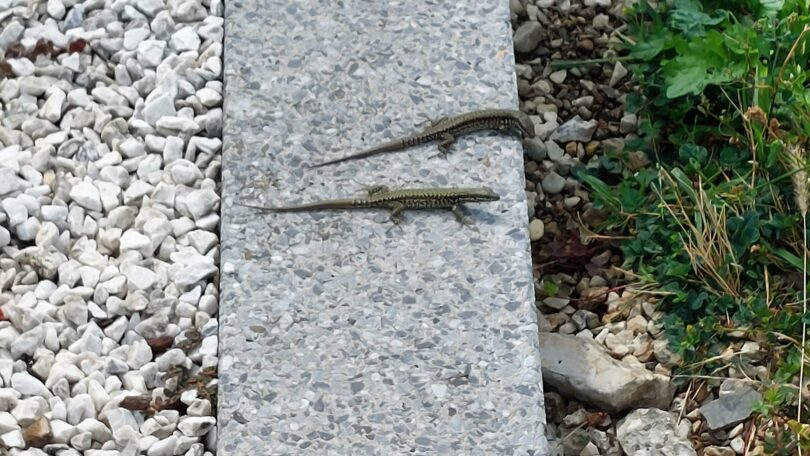
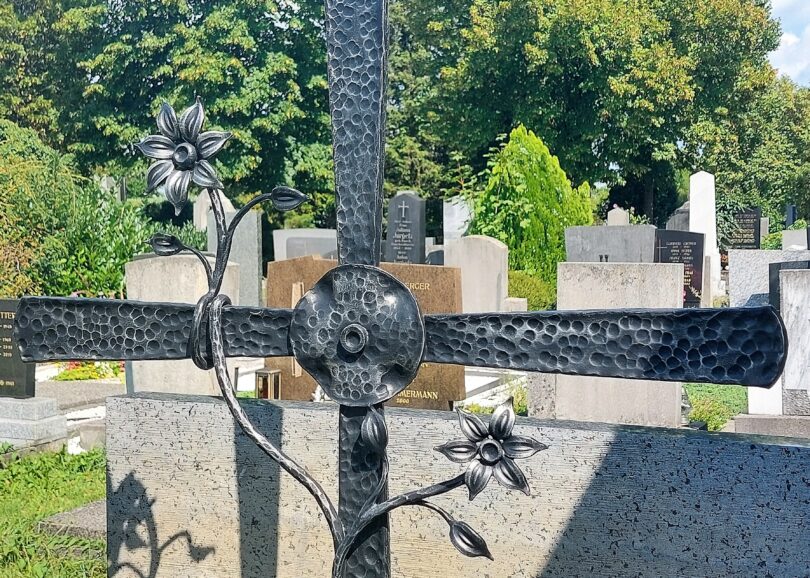
Instead of too much stone, choose a cross and natural plants. With a wrought-iron cross, you can also support local artisan blacksmiths. If you choose stone, use a local one that ensures better working conditions and shorter delivery distances. To clean the stone water and a brush is enough, you don’t need extra detergents. (White) gravel around the grave has not been necessary for a long time and it doesn’t look natural at all … the greenery can grow right up to the grave. Please don’t use herbicides either.
Waste separation (and avoidance) at the cemetery:
Avoiding waste is more important than separating it. Avoid using plastic for grave decorations, floral arrangements, candles and bouquets and ensure proper waste separation.
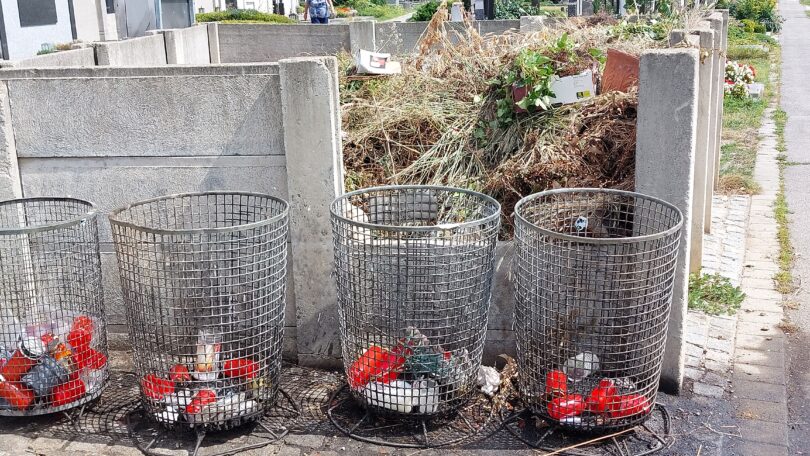
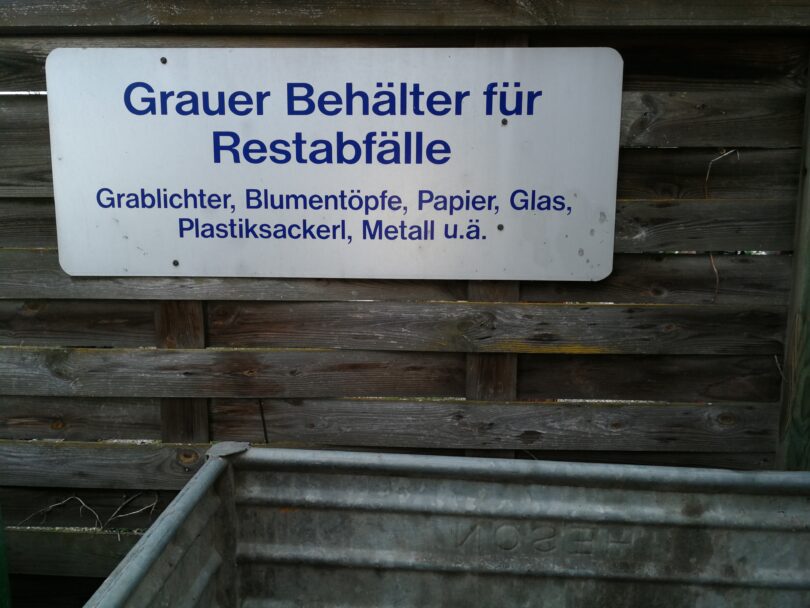
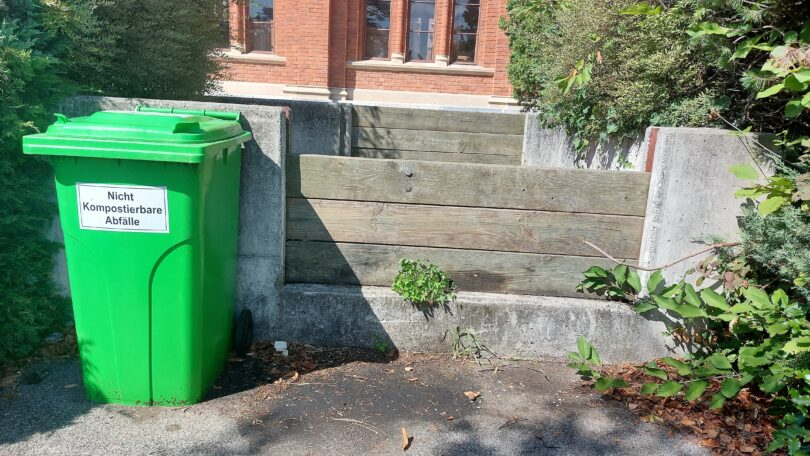
Getting to the graveyard
Decorations for graves can often be transported in public transport or on your bike. Leaving your car at home saves a lot of time and nerves during the holidays.
Tips for graveyard operators to make graveyards sustainable:
- Spaces for bikes in front of the graveyard – to invite visitors to take their bike
- Natural instead of asphalted paths on the cemetery grounds
- Put up vending machines with candles in refillable glass jars
- Benches to rest
- A successful, clearly structured and inspiring waste collection and separation system
- Planting native hedges to promote biodiversity
- Natural stone walls and wilder areas also encourage birds, bats, hedgehogs and other small mammals
- Instead of lawns have meadows – create a habitat for wild bees and butterflies like this
- Don’t use pesticides or herbicides
- Mow less frequently
- Sow orchards
- Offer nesting help
A couple of interesting (German) documents can be downloaded:
- Abfalltrennung_Friedhof – Download
- Friedhofbroschüre_GrabbesitzerInnen – Download
- Friedhofbroschüre_Pfarren – Download
- Friedhof_ohne_Gift – Download
- LED_Grabkerzen_sind_kein_Restmüll – Download
- Umweltpreis_2019_Friedhof als Ort des Lebens – Download
Sources:
- https://www.wir-leben-nachhaltig.at/aktuell/detailansicht/umweltfreundliche-letzte-ruhe/
- https://www.wir-leben-nachhaltig.at/unsere-tipps/freizeit-feiern/grabgestaltung-und-pflege
- https://www.projektnachhaltigkeit.renn-netzwerk.de/projektdetailansicht?tx_projektnbewerbung_bewerbung%5Baction%5D=showPublic&tx_projektnbewerbung_bewerbung%5Bcontroller%5D=Projekt&tx_projektnbewerbung_bewerbung%5Bprojekt%5D=503&cHash=4d3ff1196b0f9519aa864326843f80f1
- Online-Vortrag: https://www.kirchliche-dienste.de/arbeitsfelder/umweltschutz/Naturschutz-auf-Friedhof/Veranstaltungen/2020-10-12-online-vortrag-friedhoefe
- https://www.umweltberatung.at/kompostierbarer-grabschmuck?
- https://www.avocadostore.at/wissenswert/nachhaltig-leben/schnittblumen
- https://www.mein-schoener-garten.de/gartengestaltung/gartenideen/pflegeleichte-grabbepflanzung-mit-bodendeckern-31591#a-314026-welche-vorteile-haben-pflegeleichte-bodendecker
- Umweltpreis 2019 – Nachhaltige Friedhöfe – Friedhöfe als Orte des Lebens: https://www.katholische-kirche-steiermark.at/einrichtung/195/dioezesanerumweltpreis/article/12498.html
More interesting links on our website:




